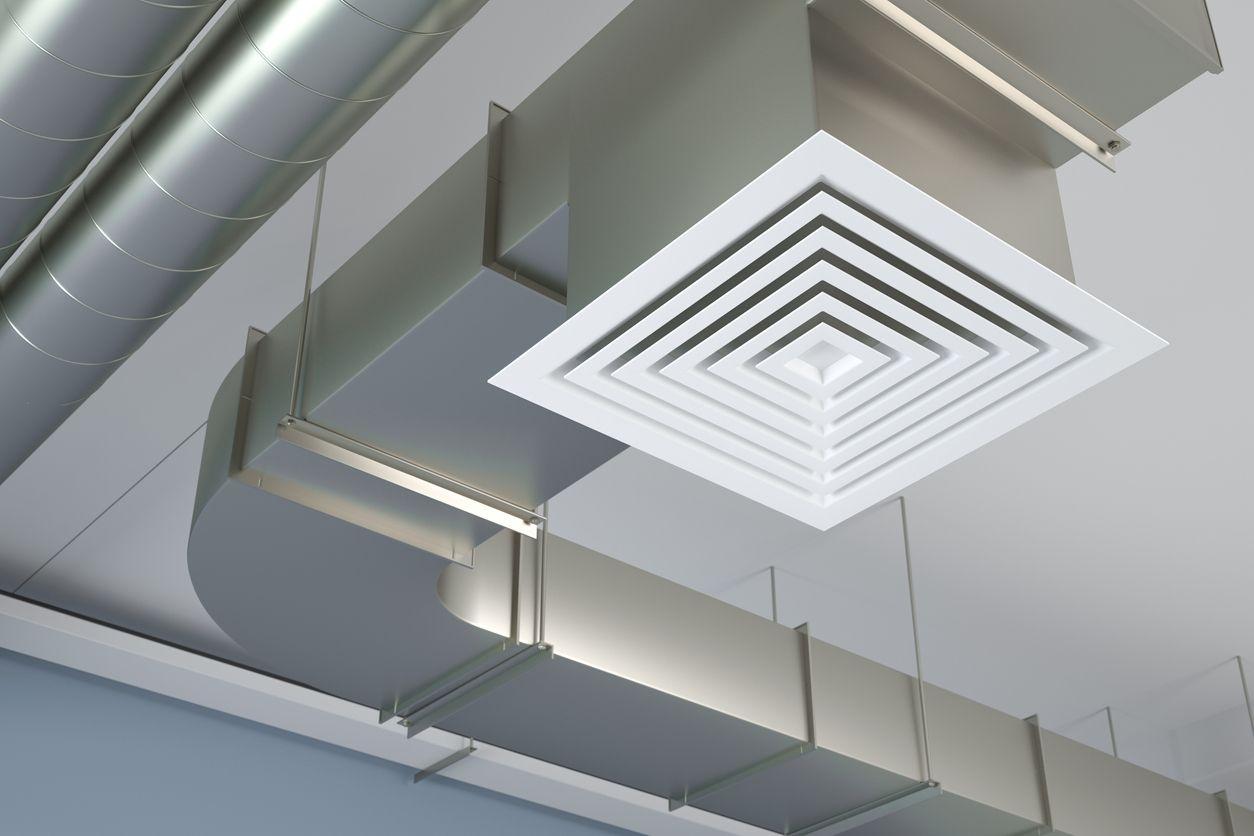Should You Sweat the Condensation on Your Ductwork?

Just like water droplets form on a cold glass of iced tea during a hot summer’s day, condensation can also form on your air ducts when the warm air inside your home contacts the cold air ducts. In serious cases that are left untreated, condensation on ductwork can lead to expensive repair issues.
Keep reading as HVAC.com, your trusted advisor for all things HVAC-related, discusses common causes of sweaty air ducts and how to prevent this issue.
Can Condensation on Ductwork Cause Damage?
A small amount of duct sweating typically won’t cause harm; however, excessive condensation on ductwork can cause damage. The most common problems caused by ductwork condensation include corrosion, duct material degradation, reduced effectiveness, leakage, and mold and mildew growth. It’s imperative to contact a reputable HVAC technician to inspect the ductwork and make the appropriate fix before further damage occurs.
“When it’s hot and humid, there’s going to be condensation on the registers and the ductwork,” said Jessica Wicks, President of DUCTZ, a national provider of commercial and residential air duct cleaning and HVAC restoration services. “If you can locate the problem, it could be as simple as replacing the air filter or insulating the ductwork. But when it’s dripping, that’s problematic, and it could lead to microbial growth.”
8 Common Causes of Sweaty Air Ducts
1. Temperature Differential
The most common cause of condensation on air ducts is a significant difference in temperature between the air inside the ducts and the surrounding environment. When warm, humid air from your living space contacts the cooler duct surface, condensation can form.
2. High Humidity Levels
High indoor humidity levels can also increase the likelihood of condensation on ductwork. When the relative humidity inside is elevated, the air contains more moisture, causing it to condense when it reaches the cold duct surface.
3. Inadequate Insulation
Poorly insulated or uninsulated ducts can be prone to condensation. Insulating ducts helps maintain a consistent temperature, reducing the likelihood of condensation forming on their surfaces.
“We always recommend insulating all or part of the outside of the ductwork, especially in unconditioned spaces,” Wicks said. “This will protect against condensation and increase the efficiency of your HVAC system.”
4. Air Leaks
Air leaks in the ductwork can bring in warm, moist air from surrounding areas. When this air comes into contact with the cooler ducts, condensation may occur. Professional duct sealing services can prevent this issue.
5. Duct Location
Ducts located in areas with significant temperature variations, such as crawlspaces or unconditioned basements, are more susceptible to condensation. These areas tend to have cooler temperatures, making ducts vulnerable to condensation.
6. Poor Ventilation
Inadequate ventilation in areas where ducts are located can contribute to condensation. Proper ventilation helps maintain a balanced temperature and humidity level.
7. Insufficient Airflow
In some cases, inadequate airflow within the ducts can lead to condensation. Reduced airflow may result from blocked or dirty filters, closed dampers, or improperly sized ducts.
8. Type of Ductwork and Installation
The type of air ducts and the installation process can also greatly affect whether condensation forms.
“Some condensation is common with metal ducts, but flexible ducts can also experience sweating if the connection points between them are not adequately sealed,” said Jeff Gervais, CEO of Gervais Mechanical in Auburn, MA. “This can lead to leaky ducts, resulting in fogging. Improper installation of the entire system can contribute to the same problem. If your ducts aren’t hung properly or are in contact with each other, they can create cold spots at the joints where condensation can also form.”
How to Prevent Condensation on Ductwork
To avoid the consequences associated with sweaty air ducts, consider the following tips:
- Control indoor humidity levels. If your air conditioning or heat pump system is struggling to keep humidity levels within the recommended 30-50% range, consider installing a dehumidifier. You can either install a whole house dehumidifier that controls humidity throughout the entire home or a portable dehumidifier to address one area or room.
- Properly insulate ductwork. Adding insulation around your ducts is a great way to lower energy bills, maintain a consistent temperature inside the ducts, and prevent the likelihood of condensation forming during a drastic temperature difference between the conditioned air inside the ductwork and the surrounding air. Consider insulating ductwork in unconditioned spaces including attics, crawlspaces, and basements.
- Seal ducts. It’s estimated that as much as 20% of conditioned air is lost through duct leaks and poorly insulated ductwork. Duct leaks are common, especially with aging ductwork. When the warm air comes into contact with the cool ducts, it can cause ductwork condensation. Air duct sealing can prevent conditioned air from escaping and decrease the chance of condensation forming.
- Regular HVAC Maintenance. To keep your HVAC system operating properly and efficiently, it’s important to invest in regular maintenance. A technician should service your HVAC unit twice a year; once before the cooling season and again before the heating season. Change air filters regularly to ensure proper airflow.
The Cost to Repair Ductwork
According to ThePrice.org, duct repair can cost between $500 and $2,000 on average. Some of the factors that affect the cost include the extent of the damage, accessibility of the ductwork, the type of ductwork, and local labor and contractor rates.